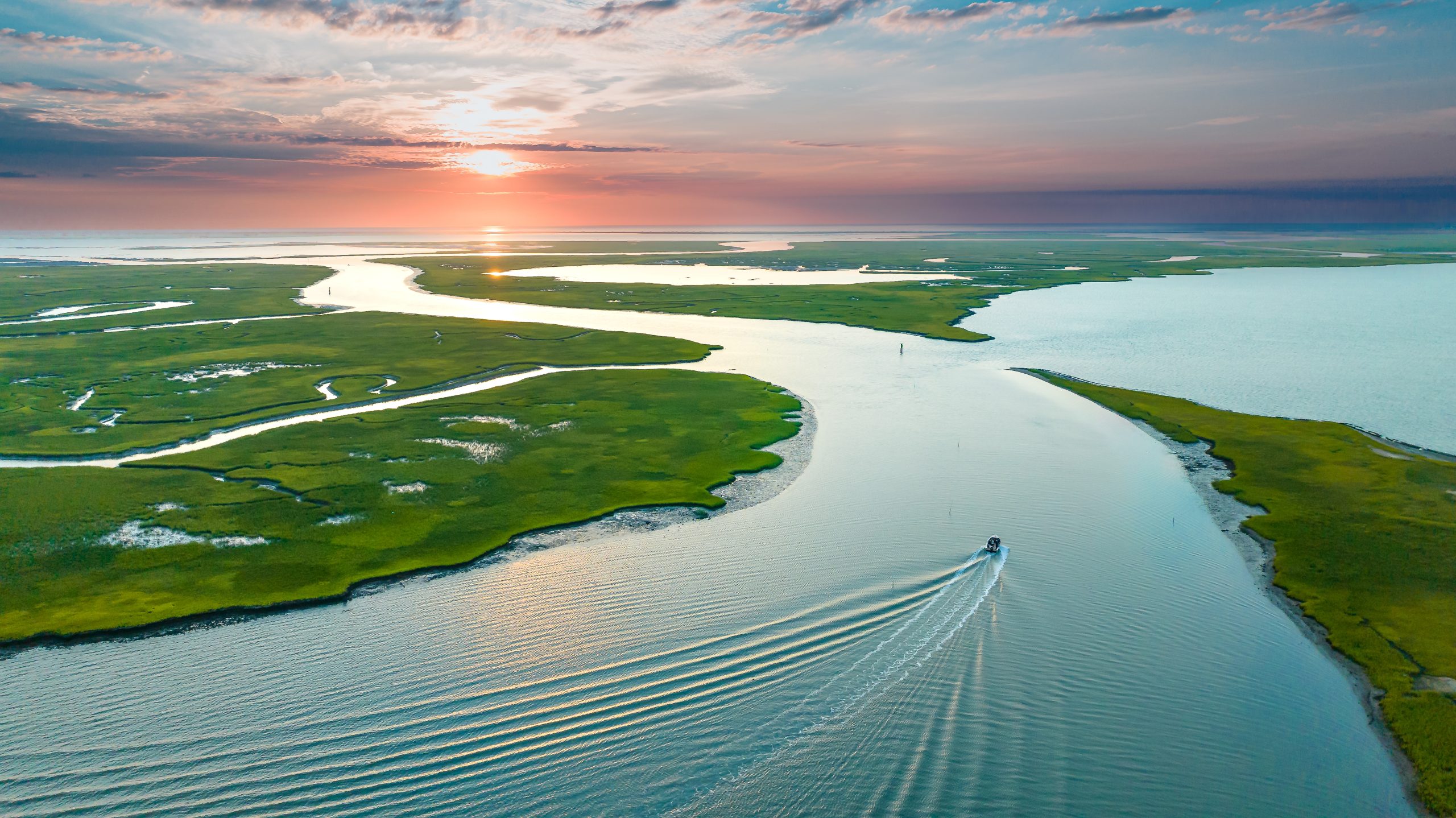I have often heard it said that the Delmarva Peninsula is the third most vulnerable region to sea level rise in America. Whatever our rank, we are certainly among the most vulnerable regions to rising seas due to our low-lying landscape and also because our region is sinking ever so slightly. Lower Dorchester County is already feeling severe effects, with many houses elevated or abandoned and school bus routes regularly thwarted by high tides. Critically, most of our towns on the Eastern Shore started as port towns and regularly experience “sunny day flooding” along with seasonal hurricane threats.
What to do about an existential global threat which is causing early and painful impacts on the Eastern Shore. Starting in 2012 Eastern Shore Land Conservancy worked with towns and counties in an attempt to get ahead on climate change and sea level rise. The main lessons from that work were adapt or retreat. Unfortunately, retreat is a tough topic – I think because we are all part oyster and prefer to just stay put once we set down roots here. And adapting to rising seas is an enormous challenge given the pervasiveness of the problem and the high cost for each wetland restoration, flood barrier or road raising.
In my retirement, I have remained engaged in climate change adaptation and have tripped over a number of bright people working on new ideas and having real success. Here are a few hopeful ideas:
Using sediment dredged from our boating and shipping channels for shoreline stabilization, beach nourishment, and marsh restoration. The Maryland Port Administration has been doing this for years in areas around Baltimore and at Poplar Island and more recently in restoring Barren and James Islands off Dorchester County. Similarly, the Maryland Department of Natural Resources is using a coordinated approach to marry local channel dredging with nearby shoreline stabilization and marsh restoration needs. One of my family’s favorite parks – Ferry Point Park at Kent Narrows – was built using material dredged from nearby channels and has now become the Shore’s largest natural baby pool;
Creating nonprofit “resilience authorities” to finance the immense cost of climate change adaptation. In response to Maryland legislation authorizing local governments to create “resilience authorities,” Annapolis and Anne Arundel County created their own authority aimed at efficiently financing the tremendous number of projects needed to adapt to sea level rise and climate change. In their first year this Resilience Authority raised nearly $20 million for adapting to coastal flooding, extreme weather events, and other climate related threats. While much of the early funding is Federal and State grants, these authorities are built to utilize creative new funding mechanisms including selling carbon or other resilience credits. Charles County similarly created their own authority and others are in process.
And here are a few bright people at the forefront of helping communities – all of our communities – adapt to threats arising from climate change: Matt Fleming – is Executive Director of the Annapolis and Anne Arundel County Resilience Authority and has not only raised a ton of funds, but also targeted those funds toward underserved communities; Brad Rogers – is Executive Director of the South Baltimore Gateway Partnership which is spearheading an ambitious project which will connect South Baltimore’s poorest communities with parks, trails, redevelopment and community amenities in ways that address flooding and systemic racism; Holly Fowler – is with Council Fire consulting and is coordinating large chunks of the above work with the environmental knowledge and personal grace needed for complicated projects with myriad partners and shifting politics. Thanks to all of you for your efforts.
As a global community, we have a daunting challenge in reducing our emissions sufficient to meet the Paris Agreement target of 1.5 C degrees of global warming. On the Eastern Shore we must do our share to limit these greenhouse gas emissions. But we also must use every innovation possible and accelerate our adaptation to the coastal flooding and other climate change impacts we already face.
Rob Etgen retired in 2021 after a 40 year career in conservation – the last 31 years as President of Eastern Shore Land Conservancy. In retirement Rob is enjoying family and working on global and local sustainability issues with Council Fire consulting out of Annapolis.


Write a Letter to the Editor on this Article
We encourage readers to offer their point of view on this article by submitting the following form. Editing is sometimes necessary and is done at the discretion of the editorial staff.